By Timothy Sibasi, Feature Writer, based in Kampala, Uganda
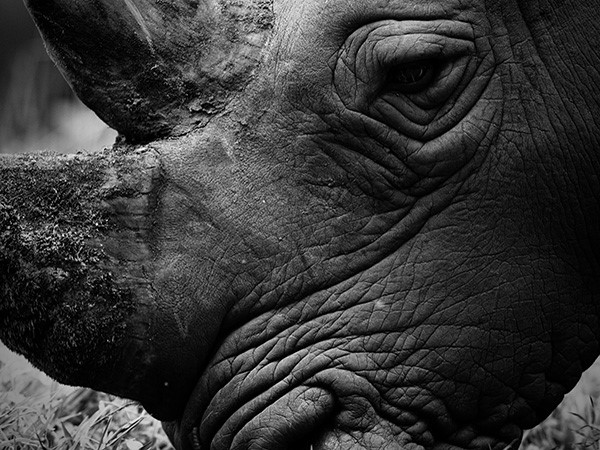
Both black and white rhinos are in danger of extinction in Uganda, due to a large scale slaughter by poachers.
The black rhino can be found throughout northern Uganda. Estimates say there are about 300 black rhinos left. While the white rhino is confined to a few isolated areas on the west bank of the Albert Nile, West Nile and Madi districts.
The total population of white rhinos in Uganda is around 80-100, of which the largest concentration is near Inde, West Nile district. In 1962 this area was declared a Sanctuary for the protection of white rhinos.
Uganda used to have a healthy population of rhinos, but the species neared extinction by 1983, on account of a civil war and poaching, as well as urbanization.
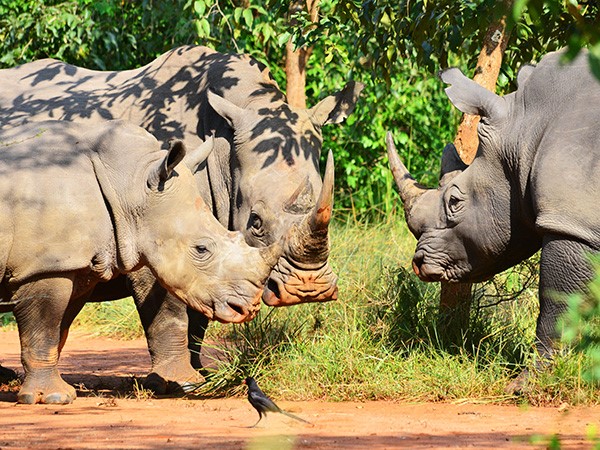
Female and Male Rhinos playing with baby calve. (Photo/Timothy Sibasi)
When Idi Amin took power in 1971, the number of rhinos had dwindled dramatically. Two can be found at Entebbe Zoo, and the remainders are under the watchful eyes of the Ugandan Wildlife Authority at Ziwa Rhino Sanctuary.The sanctuary has taken measures to ensure the world's second largest land mammals are well protected, including a restocking campaign of White Rhinos in Uganda. Ten calves have been born and there are five calves living in the sanctuary alongside bush buck, leopard, honey badgers, armadillos, waterbuck, warthog and velvet monkeys.
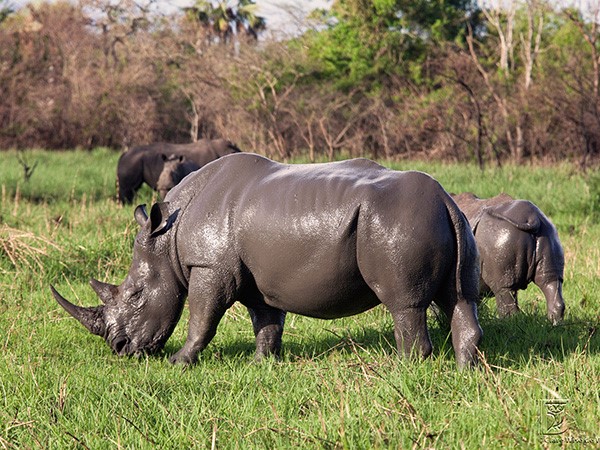
Flock of Rhinos grazing at Ziwa Sanctuary in Murchison Fall National Park. (Photo/Timothy Sibasi)
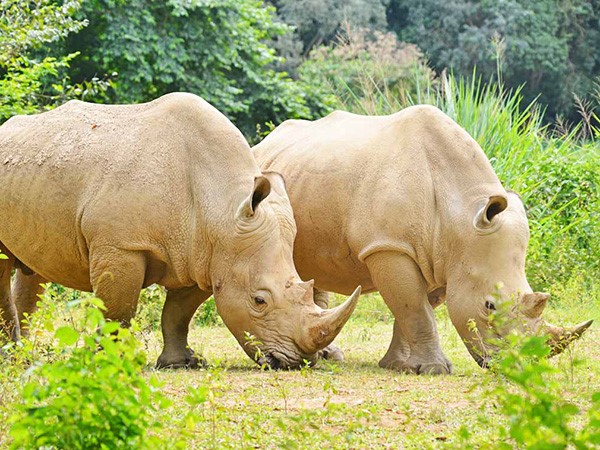
Close up shot of two White Rhinos moving in Ziwa Sanctuary. (Photo/Timothy Sibasi)
Census estimates suggest there are roughly 20,700 southern white rhinos and 5,055 black rhinos in Africa.
The three species of rhino in Asia are also threatened by the demand for rhino horns, as a symbol of wealth or to be used as part of traditional oriental medicines. In the wild there are an estimated 3, 333 greater one-horned rhinos (Indian rhino), fewer than 100 Sumatran rhinos, and only 58-61 Javan rhinos.
Africa's white rhino species is the largest of any living rhinoceros species, weighing up to 3,600 kilograms (7,920 pounds) and is the continent's third-largest species after the African bush elephant and African forest elephant. The black rhino, which is grey, can weigh up to 1,400kg (3,100 pounds). The lifespan of a wild rhinoceros is unknown, but expected to be 35-50 years for any species.
Recent years have been disastrous for rhino conservation, with the number of rhinos poached adding up to 200-300 or more per year in South Africa alone. This is 30 times the poaching levels seen in the 1990's. Sadly, poaching shows no signs of slowing down.
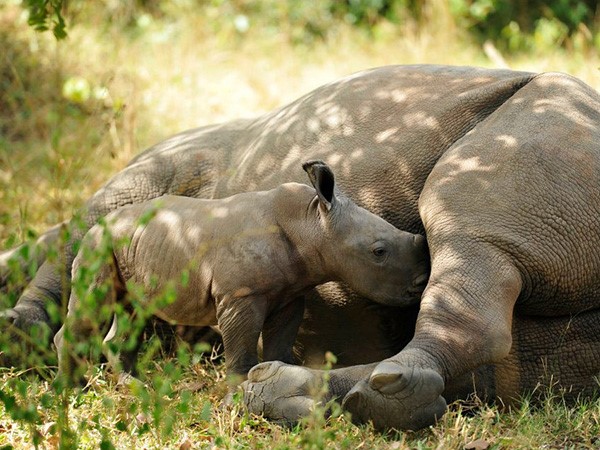
Female Rhino breastfeeding a young calve. (Photo/Timothy Sibasi)
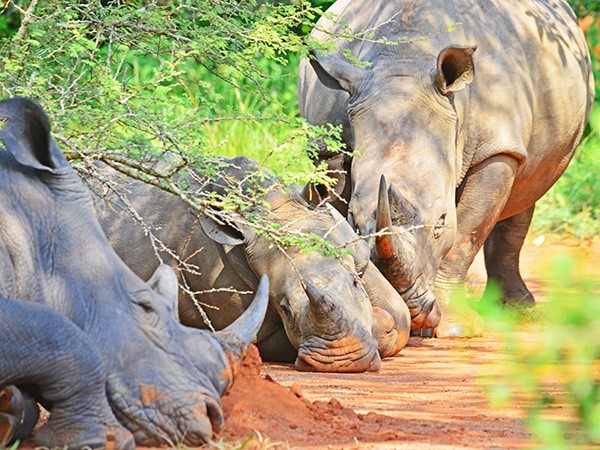
Rhinos lying on ground in Ziwa Sanctuary for an afternoon nap. (Photo/Timothy Sibasi)
SAVING THE RHINO
If rhino populations are to be saved from extinction at the hands of poachers, several actions must be undertaken:
-All rhino populations need better protection;
-More trained and well-equipped park staff are urgently required globally;
-Border security must be tightened to stop horns from being moved between countries;
-Loopholes in national and international regulations should be closed. This is to prevent poachers from posing as trophy hunters and exporting 'trophy' horns for sale into the lucrative traditional medicine markets;
-Exports of live rhinos from South African ranches to China, Vietnam and other Asian destinations must be stopped;
-Horn stockpiles that are currently in private hands need to be managed by governments in a transparent way - preferably destroyed;
-Reduce demand for rhino horn in China, Vietnam and elsewhere in Asia by engaging the Traditional Chinese Medicine community, and through education, awareness-raising and rigorous law enforcement.
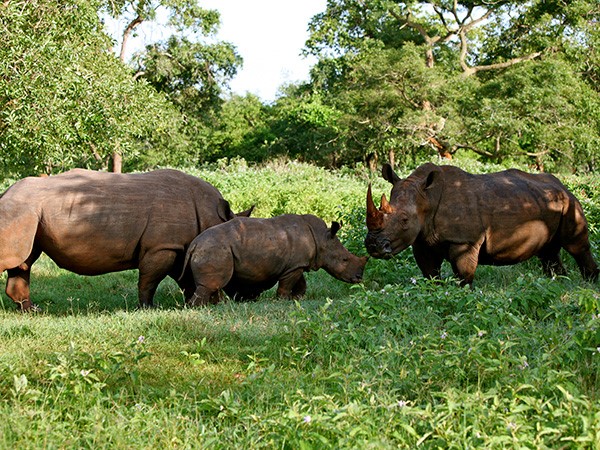
Playing around with their baby calve in Murchison Fall National Park. (Photo/Timothy Sibasi)

Game rangers arrest a poacher in Murchison Fall National Park. (Photo/Timothy Sibasi)
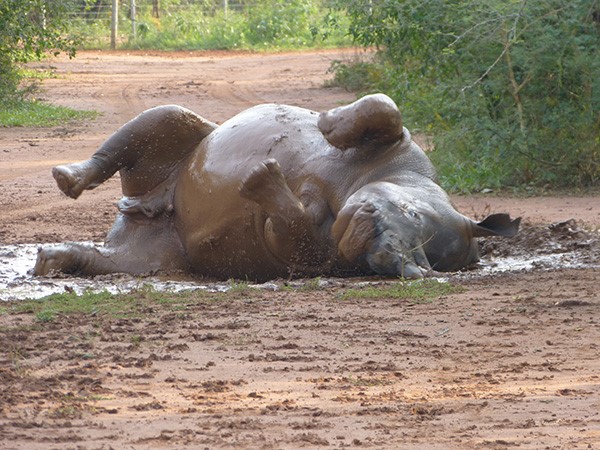
Black Rhino playing in the mud at Ziwa Sanctuary. (Photo/Timothy Sibasi)
In Uganda, the United Nations Development Programme (UNDP) has been supporting the Rhino Fund Uganda (RFU) as part of its conservation efforts nationwide.
"We believe that supporting initiatives such as the Rhino Fund to carry out activities such as the micro chipping we're witnessing today will go way in boosting Uganda's tourism industry, creating employment and wealth creation opportunities both at local and national levels and most importantly promoting Rhino Conservation in the country," says Ahunna Eziakonwa-Onochie, UNDP Assistant Administrator and Regional Director for Africa.
Angie Genade, the Executive Director of Rhino Fund Uganda says contributions will have a significant positive story on Rhino conservation at the Ziwa Sanctuary.
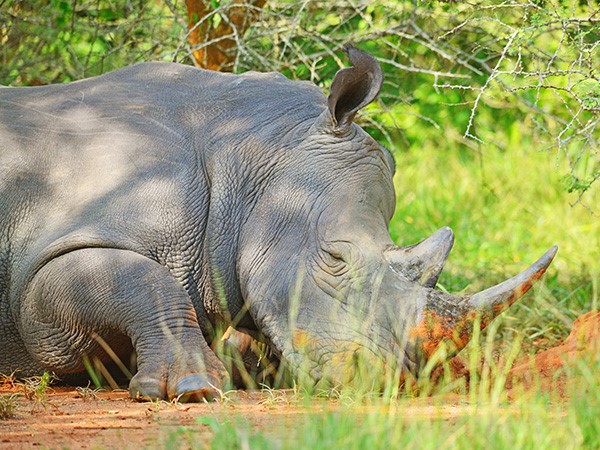
Close-up shot of black Rhino. (Photo/Timothy Sibasi)
UNDP initially provided a grant worth US$50,000 in 2005 which supported introduction of the first 4 Rhinos and an additional US$45,000 in 2014 for the micro chipping exercise.
Efforts to conserve rhinos are important because Uganda's last rhino was killed in 1983. In 1997, following political stability, Uganda conservationists formed Rhino Fund Uganda (RFU) to bring back rhinos to the country. 15 Rhinos in Ziwa Sanctuary represent the only wild population of the species in Uganda.
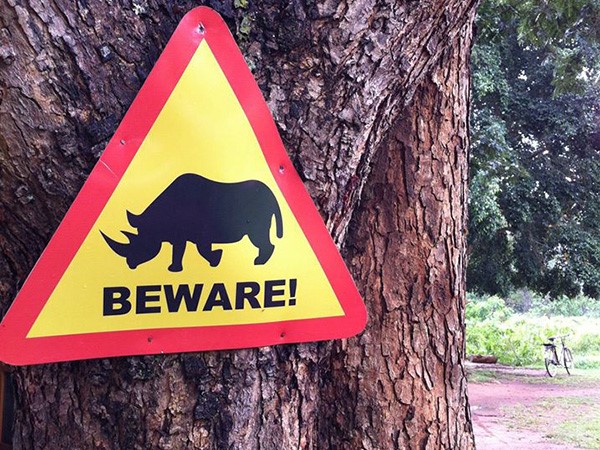
A public awareness notice to people visiting the park of Rhino crossing path ahead. (Photo/Timothy Sibasi)
The long-term aim of RFU is to introduce rhinos to Uganda's National Parks, which attract tourists.
(The opinions expressed here do not necessarily reflect the opinions of Panview or CCTV.com. )

Panview offers a new window of understanding the world as well as China through the views, opinions, and analysis of experts. We also welcome outside submissions, so feel free to send in your own editorials to "globalopinion@vip.cntv.cn" for consideration.
















